Shoe Review: Skechers GOBionic Trail
Back in late March, the kind folks at Skechers sent me a new trail shoe to test – the GOBionic Trail. I’d heard about the shoe from someone who was at Outdoor Retailer last fall and was anxious to try them out. The shoe wasn’t on the market yet, but development was done. They weren’t asking for my feedback, they were just hooking me up. From what I hear, the shoes should be publicly available in the next couple of weeks.
My summary: The GOBionic Trail is another win for Skechers. This shoe meets pretty much all of my qualifications and I like the GOBionic Trail even more than I liked the GOTrail. In fact, in the five weeks since I started running in them, I think I’ve only run once or twice in the GOTrail. That doesn’t mean it’s perfect – see some issues below, but this has definitely become my go to trail shoe for 2013.
Here are the basics of what I like:
- Lightweight – I don’t have a scale, but they feel slightly lighter than the GOTrail, which officially weighs 8.4 ounces for men’s size 9
- Low drop – 4mm with removable insole, 0mm without
- Good traction on all surfaces – the lugs are deep enough for loose trails but not so deep that they pick up rocks like the other Skechers shoes, including the GOTrail. I haven’t run in snow or through water in these shoes, but I don’t know why they would be a problem in snow. The shoes have a mild water-resistance coating, hopefully that would help in a rainy run, but I’m not sure if that would affect water drainage from a water crossing
- Reasonably cushioned – they’re not too soft, but they have more cushioning than most minimalist trail shoes
- Wide toe box – it’s comfortable on my toes even after my feet swell during long runs and the shape fits my silly Morton’s toes, a problem most of you probably don’t have
- Flexible – way more flexible than the GOTrail; they’re actually nearly as flexible as my Nike Frees, which means move with my foot as it flexes and relaxes, which makes it more comfortable and adds to the ground feel
The GOBionic Trail is super comfy and was from the first time I slipped them on. My first run in them was 8 miles and I’ve run as far as 28 miles in them. As of now, I’m planning on running at least a big chunk of San Diego 100 in them, but I’m not sure if I’ll swap out the pair at some point during the run.
I now have over 150 miles on them. The soles still look ok (the below picture doesn’t do a great job of showing it), but I’m not sure if they’re wearing at a rate that will give me 250 or 300 or 350 miles. I’d hope for more like 350, but I’d be very surprised.
Also, the upper is starting to show some tearing and thinning in a few places. Looking at these spots, even if the sole can last, the upper definitely won’t. Both are showing this wear in the same places – under the “S” and up near the forefoot. Here are some photos of the wear, along with closeups.
The wear in the sole and the upper worry me a bit, and I’ll update as I put more miles on the shoes. With the GOTrail, I was worried about the upper separating from the sole. It started to show on both my pairs right around the 100 mile mark, but with over 300 miles on my first pair and over 200 on my second, it never became much of an issue.
One big difference between GOBionic Trail and the GOTrail is that the GOTrail feels more sleek. I still like the GOTrail, but if I have to choose (and really, I do) I prefer the lower profile, lighter fit of the GOBionic Trail. It hugs my foot better and just feels faster. The upper material on the GOBionic Trail is softer, lighter and seems to breathe better than the material on the GOTrail. Those are all good things as long as it doesn’t start really falling apart too quickly.
The GOBionic Trail can be either zero drop or 4mm drop. I’ve experimented with them both ways and I definitely prefer it with the insole in, making it 4mm drop. It fits my foot better that way (without the insole, there’s a little too much room around the forefoot), and I’m used to the 4mm drop from all my other shoes. Every time I’ve run hard or run hills in zero drop “mode”, my achilles and calves are screaming at me for a couple days. I’m sure I could train myself to stop that “problem”, but I’m perfectly fine at 4mm.
I like the color they sent me, but recently I’ve seen some photos online of the shoes in a bright blue (from Runblogger):
and bright red (from SouthernAscent.com – maybe this is an Australia/New Zealand colorway though):
If you read this blog regularly, you won’t be surprised to hear that I’d prefer either of those colors. Hopefully whatever comes to market is a bright or flashy.
Despite the fact that I currently have six pairs of Skechers running shoes, I don’t own and have never run in the GOBionic. I’ve tried it on a few times, but each time have decided on the GOrun2 instead. I’m guessing the GOBionic Trail and GOBionic are built on the same last. In that case, I should definite try the GOBionic next.
Other than the potential durability issue, the only thing I don’t like about the GOBionic Trail is the laces. The ones my pair came with at least are cheap and flimsy and are already showing some fraying. They’re a different type of lace than what any of the other Skechers I have came with. From the pictures above, I’m guessing that both of those shoes came with the same type of laces that mine came with. This is obviously an easy fix for me to make if the laces actually do start falling apart before it’s time to retire the shoes.
I could only find one other full review of the shoe online. Check out Coach Caleb’s review for another (favorable) opinion.
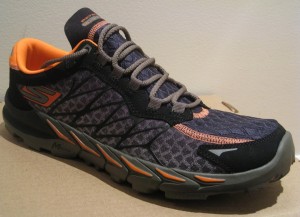
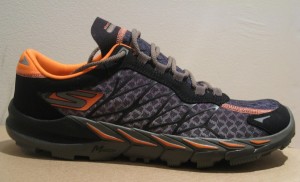
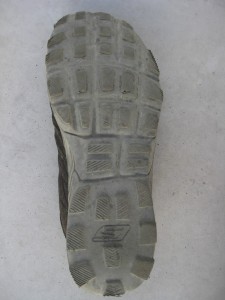
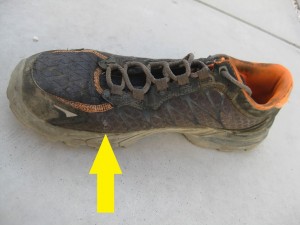
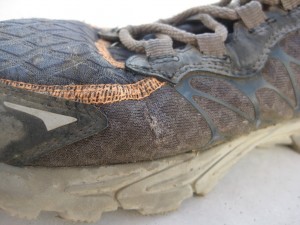
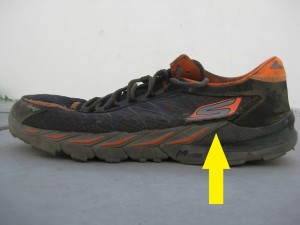
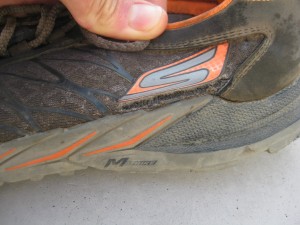
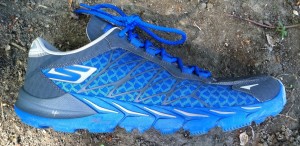
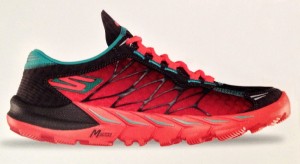
These type of shoes are perfect for trekking purposes. My dad used to have this and it provides good grip over sandy areas. Thanks for sharing the review.
Regards,
Barker Marine
Men Shoes UK
Best information on this shoe so far. Wish more reviews looked at durability! 150 miles isn’t that far actually. On the other hand you almost get two pairs of Skechers for the price of one Inov-8 or similiar (at least over here in Europe).
Thanks! And that’s a great point that I thought about adding. I haven’t seen the price for the GOBionic Trail yet, but I agree, in the US, Skechers are priced so that a little less durability still makes them still cost effective!
Nice comprehensive review Josh. Actually kind of digging the look of them too.
Would it last long if you use it mainly on concrete/asphalt?
Thanks Josh. I also have a pair of the orginal GOtrails and, speaking of mortons toe, I am working to get over terrible case of capsulitis. So I’m hoping to you compare the forefoot cushioning and protection in the GObionic to the original GOtrail?
Thanks for the comment, sorry for my delay in responding. I think the GObionic trail is a much better shoe than the original GOtrail. It’s more comfortable, better fitting around the whole foot and more responsive. Unfortunately, I really can’t remember how much cushioning it has in the forefoot. I think that it has better protection around the toes. If you like the GOtrail, I would definitely try the GObionic Trail.
I wear size 10 in GObionic (M version)……..very well on my feet.
Same size for GObionic Trail??
I’ve never actually run in the GObionic, but I run a lot in the GOrun 2 and 3 and to me the GObionic trail runs a little bigger. My first pair was the same size as the GOrun and it was a little too big. My second pair, I got a half size smaller and it was better. Unfortunately, I’m not sure how the GOrun compares to the GObionic. Sorry!